Omega Brand Review: Identity, Reputation and Ranking
Swiss Luxury Watch Brands Reviews Menu
Shop Omega Watches:
- Omega Seamaster 300 Master Co-Axial
- Omega Seamaster Aqua Terra (*)
- Omega Seamaster Bullhead
- Omega Seamaster Diver 300m (Omega Seamaster Professional 300m)
- Omega Seamaster Planet Ocean
- Omega Seamaster Ploprof 1200m
Omega – From The Moon To The Deep – James Bond’s Choice
History, Mission, Manufacture, Movements, Reputation, Ranking & Pricing
Omega Brand Review By Alexander – Founder and Owner of swissdiverswatches.com
A Review of Omega’s history
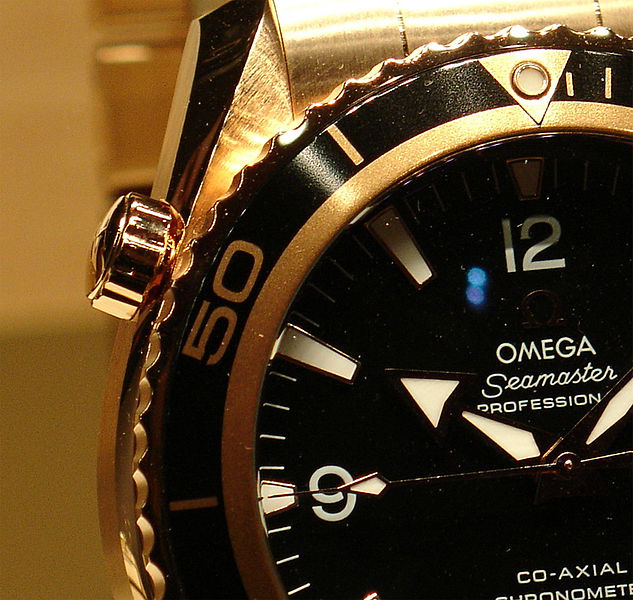
In 1848, the 23 year old Louis Brandt established the forerunner of Omega in La Chaux-de-Fonds in Switzerland. The headquarters of Omega is today located in Biel/Bienne in Switzerland, and Omega is wholly owned by Swatch Group.
The name Omega is derived from the last letter in the Greek alphabet called Omega (Ω). Since ancient times, Omega (Ω) has been a symbol of mysticism and spirituality.
Omega has travelled farther and deeper than most luxury watch brands – to the Moon and to the bottom of the ocean! Omega is famous for its “Moon Watch” – the Omega Speedmaster, and its diverse and excellent divers watch collections – the Omega Seamaster.
Down below: Omega’s two most legendary timepieces of all time: Omega Speedmaster Professional (“the Moon Watch”) and the Omega Seamaster Professional:
Omega Speedmaster Professional – also known as “the Moon Watch”:
Omega Seamaster Professional – also known as “the James Bond Watch”:
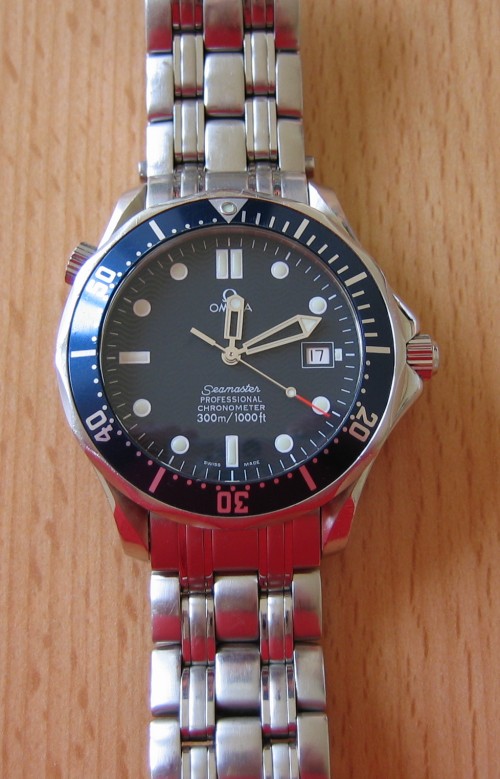
In 1848, Louis Brandt established the forerunner of Omega in La Chaux-de-Fonds in Switzerland. He opened a retail store for watch manufactures.
Down below: the workplace of Omega’s founder Louis Brandt. The gentleman in the photograph is Louis Brandt himself.

In 1880, two brothers – César Brandt and Louis-Paul joined forces to manufacture watches
They employed modern and industrialized methods and started their production in the city of Bienne. Their productions weren’t signed Omega, since Omega wasn’t the manufacturer’s brand name yet. They signed their productions Celtic, Patria, Helvetia, Gurzelen and Jura. It would take several more years before the brand would be called Omega.
In 1889, the forerunner of Omega – Louis Brandt & Son, became the largest industrial Swiss watchmaker. They produced annually 100,000 watches.
In 1892, Louis Brandt & Son (the forerunner of Omega), in cooperation with Audemars Piguet (member of “The Holy Trinity” of luxury watches), developed the first minute repeater wristwatch in the world. By the early 1890s, Jaeger LeCoultre was specialized in minute repeaters, but they were made for pocket watches and not for wristwatches.
In 1894, Louis Brandt & Son officially changed their name to Omega!
In 1894, Louis Brandt & Son mass produced fob watch calibers/movements, which became so popular for their technical excellence, simple construction and interchangeable parts, that the banker Henri Rieckel suggested that the name of this movement – 19”’ Omega Caliber – would also lend its name to the manufacturer.
In 1903, the Omega brand name was so successful that the manufacturer decided to drop all previous names.
In 1909, Omega started making sports chronometer watches. Omega’s watches were used in several balloon races.
In 1917, the legendary luxury watch manufacturer became the official timekeeper of The British Royal Airforce.
In 1918, the watchmaker became the official timekeeper of The US Army.
In 1919, Omega won the precision prize at the Neuchâtel Observatory.
In 1925, Paul-Emile Brandt, descendant of Louis-Paul and César Brandt (owners of the Omega brand) created the union between Omega and Tissot.
In 1930, Omega and Tissot merged into Société Suisse pour l’Industrie Horlogère (SSIH).
In 1933, the watch manufacturer acquired its first world record for precision. In 1936, Omega acquired its second world record for precision.
In 1946, the luxury brand acquired yet another world record for precision.
In 1955, the merger of Omega and Tissot (which took place in 1930) – the Société Suisse pour l’Industrie Horlogère (SSIH) continued to grow and expand. SSIH also established Lemania and Lanco, which both manufactured most of Omega’s chronograph movements.
In 1957, Omega created the legendary, famous, and almost mythical Omega Speedmaster – a chronograph wristwatch.
It would later on become known as the famous “Moon Watch” used by NASA in 1969. Originally however, the Omega Speedmaster was actually used as a racing watch by racing drivers. The Omega Speedmaster’s original intended purpose wasn’t for space travel at all.
The same year, in 1957, Omega released the equally legendary and famous Omega Seamaster 300 – Omega’s answer to Rolex’s divers watch – the Rolex Submariner.
Since the late 1950s and early 1960s, Omega and Rolex have been figting each other, as far as their marketing is concerned, for who has got the best divers watch.
The Omega Seamaster Professional has undergone several aesthetical changes since 1957, and the Omega Seamaster Professional below, doesn’t represent the original 1957 Omega Seamaster Professional design. The collection name however, indeed dates back to the 1950s, and for that purpose, the modern Omega Seamaster Professional is illustrated below:
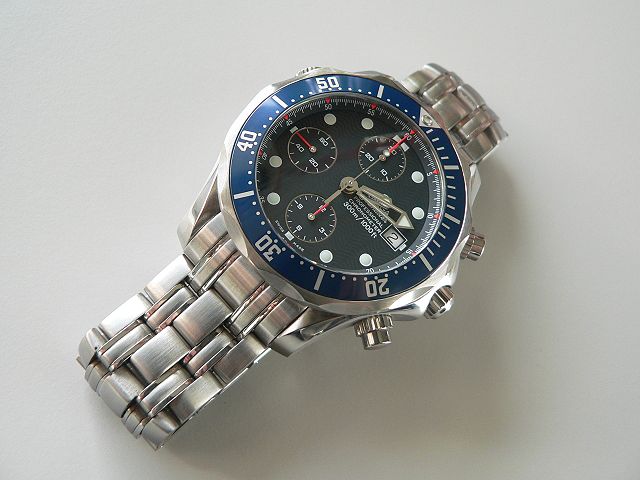
In 1965, NASA needed a professional, robust, accurate and reliable wristwatch for their future space missions.
For practical reasons, NASA didn’t have the time to arrange an official contest among the luxury wristwatch makers and to have them compete for the honor of becoming NASA’s watch of choice. USA decided that it wanted to get to the Moon before the Soviet Union did.
NASA sent a couple of NASA employees dressed in civilian clothes to the local luxury wristwatch retailers, and purchased several luxury watches belonging to several Swiss luxury wristwatch brands. Among the watches that NASA procured and purchased, was the Omega Speedmaster.
NASA brought all of these Swiss luxury timepieces to their laboratories to perform some really thorough, tough, extremely demanding and exacting tests. The tests involved shock resistance, changing air pressure and extreme temperature variations.
The only watch which survived and passed all the tests was the legendary Omega Speedmaster. That’s the reason why NASA picked the Omega Speedmaster!
In 1967, Omega acquired the millionth official chronometer certificate.
In 1969, Omega released an iconic chronograph divers watch with a case design reminiscent of a bull’s head – thereby its name – Omega Seamaster Bullhead.
In 1969, on July 21st, Neil Armstrong became the first human being to walk on the Moon.
However it wasn’t Neil Armstrong, but actually Buzz Aldrin, who became the very first human being, and astronaut to wear the famous, and legendary Omega Speedmaster Professional on the Moon!
Down below: Buzz Aldrin wearing the legendary Omega Speedmaster Professional.
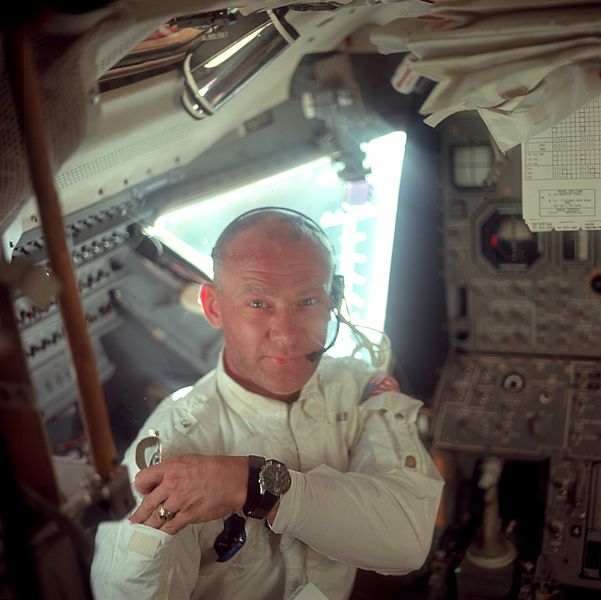
(Image By NASA/Neil A. Armstrong)
In the image below: Buzz Aldrin was wearing the Omega Speedmaster Professional on the moon – thereby the timepiece earned its legendary nickname – “The Moon Watch”. The watch was directly exposed to space!
Just a quick note: Buzz Aldrin is wearing the Omega Speedmaster on his right sleeve. Do you see the black strap?
Down below: the Omega Speedmasters that were worn by astronauts Schirra, Gordon and Stafford:
Omega itself was actually unaware of the fact that NASA had picked their brand. NASA did this in all secrecy to save time, so that they could avoid an official watch brand competition. USA had to get to the Moon before the Soviet Union. NASA had neither proclaimed any official luxury watch brand contest nor did they contact the Omega brand itself.
However when the astronauts returned to Earth, NASA published its official pictures, and in those pictures, Omega did notice the that the astronauts were wearing on the sleeves of their space suits the Omega Speedmaster Professional. And since then Omega has proudly and quite aggressively marketed the fact that NASA had chosen their Omega Speedmaster Professional.
However, most people are unaware that the Omega Speedmaster’s history actually started in 1957 and not in 1969, and the Speedmaster wasn’t originally meant to be a space watch – it was actually a racing chronograph watch used by racing drivers.
In 1970, the legendary French naval officer, Commander, oceanographer, scientist, photographer and movie maker Jacques Cousteau requested a divers watch. Omega created the Seamaster 600 – Plongeur Professionnel (PLOPROF). That year, this watch won the record for deep-sea diving – another accomplishment of the Omega brand!
In the early 1970s, Société Suisse pour l’Industrie Horlogère (SSIH – the Omega-Tissot merger) had become Switzerland’s single largest manufacturer of finished Swiss watches.
In 1972, Omega accomplished yet another feat – the 2,000,000 th chronometer certificate.
In 1974, the brand invented the Megaquartz chronometer.
In the early 1980s, SSIH (the company based on the Omega-Tissot merger) failed economically and was bailed out by banks. SSIH became the SSIH/ASUAG Holding Company.
In 1983, on December 16th, the watchmaker inaugurated the Omega Museum. In 1995, Omega invented the first automatic wristwatch equipped with a central tourbillon.
In 1985, CEO Nicolas Hayek and Swiss private Investors reorganized and renamed the SSIH/ASUAG Holding Company into Société de Microélectronique et d’Horlogerie (SMH).
In 1995, Omega became James Bond’s wristwatch of choice!
Omega became the official timekeeper of the famous and fictional British Secret Agent – James Bond 007. Since 1995 until our days, Omega has been James Bond’s luxury wristwatch, and Bond actors Pierce Brosnan and Daniel Craig have worn Omega watches in all their Bond Movies.
Below: the legendary Omega Seamaster Professional 300- also known as the “James Bond Watch”.

The Omega Seamaster Professional 300 – the classic James Bond Watch of the 1990s and the early 2000s.
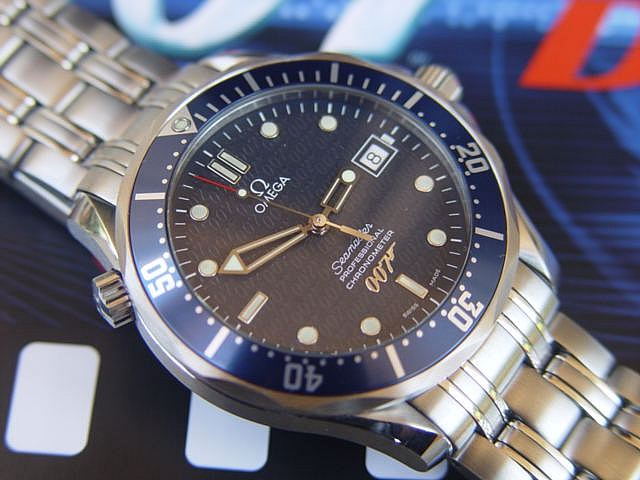
Below: In the most recent Bond Movies starting in 2006, Bond actor Daniel Craig has been mostly wearing an Omega Seamaster Planet Ocean:
In 1998, SMH, became Swatch Group, which in essence was established many decades earlier by Omega and Tissot.
In 1999, English watchmaker George Daniels made one of the greatest inventions in watchmaking history: the co-axial escapement – the automatic 2500 movement. Omega improved the technology and started producing these movements on a massive scale.
In 2003, the brand launched the Railmaster Collection.
In 2007, Omega introduced the Omega co-axial in-house movement 8500 – which is another feat of Omega and another milestone in watchmaking history! Probably one of the most durable, accurate, reliable, shock – and magnetism resistant, and robust movements ever made.
Top Page/Shopping/Brand Review Menu
A Review of Omega’s mission
Omega is committed to:
- Beautiful and aesthetically appealing designs.
- Innovation and horological prowess.
- Quality.
Top Page/Shopping/Brand Review Menu
A Review of Omega’s manufacture
Omega is known for its very strict, stringent, thorough, relentless tests of its timepieces.
Omega doesn’t release a single timepiece to the retailers, unless Omega is 100% satisfied with every aspect of the timepiece’s performance, accuracy, durability, reliability, water resistance, magnetic resistance, shock resistance, metal surface quality and build quality.
To my knowledge, Omega is one of very few luxury brands, which possesses the technological knowhow and prowess to repair other brands. Omega is capable of repairing non-Omega watches!
Omega watches have an extraordinarily well made finishing and a quite tasteful and ingenious combination of brushed and polished metal surfaces. Omega’s build quality is known to be excellent – maybe not yet equal to Rolex, but Omega might get there soon.
Most Omega watches and collections, are chronometer certified which makes Omega a member of a small and exclusive club of Swiss watch manufacturers.
The accuracy standard set by COSC (the Official Swiss Chronometer Testing Institute) is -4/+6, which means a timepiece can lose 4 seconds or gain 6 seconds a day. However to be perfectly honest with you, Omega exceeds by far COSCs accuracy standards and requirements! Omega is even more accurate and demanding than COSC! Omega’s standard is -1/+5, meaning an Omega watch can only lose 1 second or gain 5 seconds per day.
If you are an accuracy enthusiast, or if you simply need a very reliable, accurate automatic or mechanical watch, Omega is definitely the right choice. The Omega Seamaster Collections are universally known to have very accurate movements.
Even though not all movements utilised by Omega are in-house made, a very large percentage of their movements are to a large extent in-house made.
A few years ago, Omega’s CEO Stephen Urquhart stated, that in a few years time, Omega would almost exclusively utilize and rely on their in-house made Omega co-axial movements with the exception for the Omega Speedmaster (the “Moon Watch” used by Nasa on the Moon in 1969). This means Omega intends to join the exclusive club of Swiss watch manufacturers that are using in-house made movements.
Even though Omega refers to the new Co-Axial movements – the 8500 series and the 9300 series, as “in-house movements”, it’s important to point out that these movements are still manufactured and developed by Swatch Group and ETA. ETA builds these co-axial in-house movements specifically for Omega.
It’s really difficult to know where exactly to draw the line between a movement which is in-house made and a movement which isn’t in-house made. I’d say that Omega’s new co-axial movements are partially in-house made, but certainly not fully in-house made. Omega’s main competitor – Rolex, makes every single movement themselves. Rolex’s movements are 100% in-house made.
What Omega and Rolex have in common, is that they focus on the basic time functions and make them exceptionally good
Hour-, minute-, and second-hands, and a date window, and sometimes a GMT function. Omega and Rolex make these basic features and functions exceptional, and extremely accurate, durable and reliable.
While it’s true that Omega rarely offers any complications such as astronomical, timing and striking complications, Omega does make simple but stellar movements just like Rolex.
It’s true that brands such as Patek Philippe, Audemars Piguet, Vacheron Constantin, Jaeger LeCoultre, Blancpain, Breguet, and to some extent – IWC, utilise complications and even grande complications.
The problem with complications is that they are less serviceable and durable. The more complicated an automatic and a mechanical movement is, the more things can go wrong with it.
It’s the very simplicity of Omega’s (and Rolex’s) movements, that makes them stellar movements of excellent quality, accuracy, durability and reliability. After all: that’s what’s important in a watch.
I would prefer anytime simple yet stellar and reliable movements, over complications and grande complications.
What is particular to Omega’s in-house made co-axial movements, is that they indeed represent a milestone in watchmaking.
The co-axial movement reduces friction which means the mechanical movement is less prone to wear and tear, and is therefore more durable and serviceable.
The Omega co-axial in-house movements are also anti-magnetic – they can withstand magnetic fields greater than 15,000 gauss.
The Omega co-axial in-house movements utilise an Si14 Silicon balance spring which makes the movement resistible to 1) magnetism and 2) shocks.
So why are Omega’s in-house made Co-Axial movements so special? This is a short summary:
The Omega co-axial in-house movements are chronometer certified – they have been submitted to and approved by “Controle Officiel Suisse des Chronomètres” – the “Official Swiss Chronometer Testing Institute (COSC). COSC’s standards are -4/+6, which means a timepiece can lose 4 seconds or gain 6 seconds a day. Omega’s standards are even higher than that: -1/+5, which means an Omega watch is only allowed to lose 1 second or gain 5 seconds a day.
Since these in-house made Omega movements are equipped with anti-magnetic technology, a co-axial escapement (which increases the accuracy, increases the serviceability, and reduces friction) and an Si14 Silicon balance spring, Omega is able to offer you a 4 year warranty on their movements! This is unheard-of, unprecedented and unparalled in watchmaking!
Top Page/Shopping/Brand Review Menu
A Review of Omega’s movements
Omega uses a large variety of movements.
Omega offers both highly modified and improved ETA movements (Omega Co-Axial 2500) and Omega in-house movements – the Omega Co-Axial 8500 series. Omega offers several variations of its basic in-house movement 8500. Omega does also to a lesser extent use Lemania and Piguet movements – none of them are in-house made.
The co-axial escapement, designed and invented by British watchmaker George Daniels, reduces the friction inside the movement and thusly increases the durability of the watch movement, which means that the watch needs to be serviced less frequently.
This means that the watch can and will function well during longer time intervals. The co-axial escapement, or co-axial movement, is the star of the show of the modern Omega brand, since Omega nowadays builds a lot of its modern prestige around this technology.
As far as Omega’s divers watches are concerned, they use the following movements:
Omega Seamaster 300 Master Co-Axial:
- Omega Co-Axial in-house automatic movement 8400, with a 60 hour power reserve. This is the movement which is currently used in the Omega Seamaster 300, equipped with a “vintage look” – a homage to the original Omega Seamaster Professional 300, which was introduced in 1957. This was Omega’s early answer to Rolex Submariner back in the 1950s and the early 1960s.
Omega Seamaster Aqua Terra:
- Omega Co-Axial automatic movement 3313, base movement Piguet 1285, with 37 jewels, 28,800 vph, and a 52 hour power reserve. This movement is used for chronographs.
- Omega 4564 (Swiss Quartz).
- Omega Co-Axial in-house automatic movement 8500, with 39 jewels, 25,200 vph, and a 60 hour power reserve.
- Omega Co-Axial in-house automatic movement 8508. Based on Omega Co-Axial 8500.
- Omega Co-Axial in-house automatic movement 8520, Si 14 balance spring with 28 jewels, 25200 vph, and a 50 hour power reserve. Based on Omega Co-Axial 8500.
- Omega Co-Axial in-house automatic movement 8521, Si 14 balance spring with 28 jewels, 25200 vph, and a 50 hour power reserve. Based on Omega-Co-Axial 8500.
- Omega Co-Axial in-house automatic movement 8601, with 39 jewels, 25200 vph, and a 55 hour power reserve.
- Omega Co-Axial in-house automatic movement 8602. Based on Omega Co-Axial 8500.
- Omega Co-Axial in-house automatic movement 8605, 28800 vph, and a 60 hour power reserve. Used for GMT movements. Based on the Omega Co-Axial 8500.
- Omega Co-Axial in-house automatic movement 8611, Si 14 balance spring with 39 jewels, 25,200 vph, and a 55 hour power reserve. Based on Omega Co-Axial 8500.
- Omega Co-Axial in-house automatic movement 8612, based on the Omega Co-Axial 8500.
Omega Seamaster Bullhead:
- Omega Co-Axial in-house automatic movement 3113, with 35 jewels, 28,800 vph, and a 52 hour power reserve.
Omega Seamaster Diver 300m (Omega Seamaster Professional 300m):
- Omega 1424 (Swiss Quartz).
- Omega Co-Axial automatic movement 2500, base movement Swiss automatic ETA 2892-A2, with 27 jewels, 25,200 vph, and a 48 hour power reserve.
- Omega Co-Axial in-house automatic movement 3330, with a 52 hour power reserve. Used for chronographs.
- Omega Co-Axial automatic movement 3603, with a 52 hour power reserve. Probably in-house made. Used for the GMT function and chronographs.
- Omega Co-Axial in-house automatic movement 8800, with a 55 hour power reserve, 25,200 vph.
- Omega Co-Axial in-house automatic chronograph movement 9900, with a 60 hour power reserve, 25,200 vph.
Omega Seamaster Planet Ocean:
- Omega Co-Axial 2500, base movement ETA 2892-A2, with 27 jewels, 25,200 vph, and a 48 hour power reserve.
- Omega Co-Axial 3313, base movement Piguet 1285, with 37 jewels, 28,800 vph, and a 52 hour power reserve. This movement is used for chronographs.
- Omega Co-Axial in-house automatic movement 8500, with 39 jewels, 25,200 vph, and a 60 hour power reserve.
- Omega Co-Axial in-house automatic movement 8501, with 39 jewels, 25,200 vph. Based on Omega Co-Axial 8500.
- Omega Co-Axial in-house automatic movement 8520, with 39 jewels, 25,200 vph, and a 50 hour power reserve. Based on Omega Co-Axial 8500.
- Omega Co-Axial in-house automatic movement 8605, 28,800 vph, and a 60 hour power reserve. Used for GMT movements. Based on Omega Co-Axial 8500.
- Omega Co-Axial in-house automatic movement 9300, with 54 jewels, 28,800 vph, and a 60 hour power reserve. Used for chronographs. Based on Omega-Co-Axial 8500.
- Omega Co-Axial in-house automatic movement 9301, with 54 jewels, 28,800 vph. Based on Omega Co-Axial 8500.
Omega Seamaster Ploprof 1200m:
- Omega Co-Axial in-house automatic movement 8500, with 39 jewels, 25,200 vph, and a 60 hour power reserve.
Now let’s get into the technical details of Omega’s in-house co-axial movements. The 8500 and 9300 movements have several interesting technical features that might interest you:
- They use the co-axial movement.
- They are partially in-house made by Omega.
- Both the 8500 and the 9300 movements have a 60 hour power reserve! As a comparison, the famous Rolex Submariner has a 50 hour power reserve.
- The in-house co-axial movements have 39 jewels (8500 movement) and 54 jewels (9300 movement) respectively. As a comparison, Rolex Submariner has 31 jewels.
- Both of the in-house co-axial movements use silicon components inside the movements, which reduce friction, reduce the need for lubrication, and improve the durability and longevity of the movements and increase the time intervals between each servicing or maintencance. That’s why Omega can offer an unheard-of, unprecendented and unparalleled 4 year warranty on the 8500 and 9300 movements!
Top Page/Shopping/Brand Review Menu
A Review of Omega’s reputation
Omega enjoys an excellent global reputation and is one of the most prominent Swiss luxury watch manufacturers and brands in the world.
Omega has consistently been associated with technical innovation, technical prowess, and a pioneering spirit second to none. Omega is Rolex’s main competitor.
Omega is the nr 1 pioneering brand that has pushed the boundaries of both technology and human history. Omega has travelled to the Moon and to the bottom of the ocean. Omega has travelled farther than any brand!
As far as ranking is concerned, Omega belongs to the top 10 luxury wristwatch manufacturers and brands in the world – without question. It’s successful worldwide and Omega is available at retailers across the globe. It’s said that Omega enjoys a 70% global brand recognition.
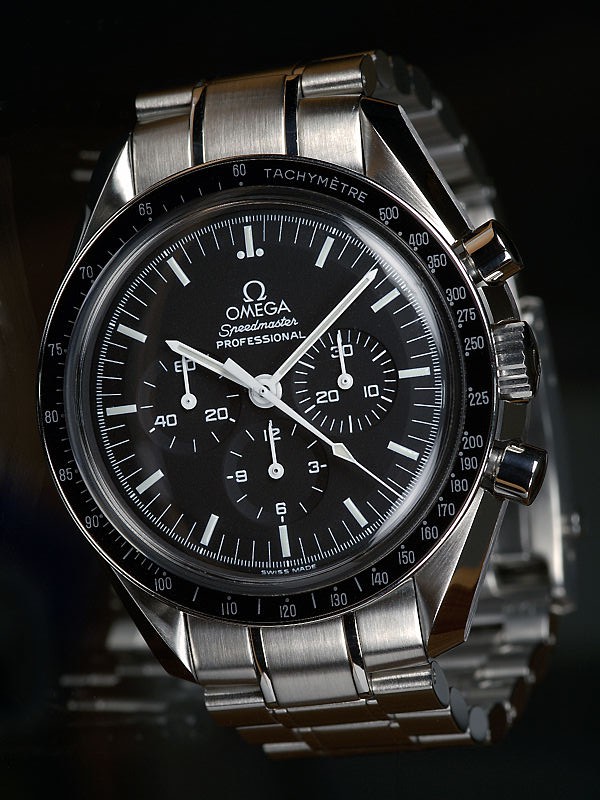
Omega is also known to produce elegant, practical, robust, versatile all-round watches and a wide range of collections that appeal to many different tastes – which explains Omega’s universal appeal.
Omega has a long and respected history – the watch manufacturer has existed since 1848.
The Royal Flying Corps of Great Britain picked Omega as their official timekeeper for their combat units in 1917.
The American army picked Omega as their official timekeeper in 1918.
Omega has been the official sponsor of 23 Olympic Games. The first Olympic Games sponsored by Omega was the 1932 Los Angeles Summer Olympics, and the last time was at the Summer Olympics in China in 2008.
What’s Omega mainly famous for?
- Seamaster Divers Watches, considered to belong in the category of the world’s flagship divers watches, available on the market today.
- The Speedmaster Moon Watch which was used by NASA on the Moon in 1969. Omega Speedmaster is as far as I know the first and only watch model, and watch brand, which has been worn on the Moon. NASA selected Omega due to its technical brilliance and excellence!
- The Co-Axial Movement, released in 1999, and invented by the English watchmaker George Daniels, revolutionized watchmaking technology, and challenged 250 years of watchmaking.
- Popular Culture and Movies: James Bond 007. Omega has been the fictional, suave British secret agent’s watch of choice since Pierce Brosnan starred as Bond in GoldenEye (1995) until our days. Omega is the luxury wristwatch of the modern James Bond (Daniel Craig) as well. Omega has replaced Rolex as Bond’s luxury wristwatch.
Let’s get into technical details:
Omega’s movements – both the highly modified (by Omega) ETA movements, and the in-house made movements, are known across the world to be very accurate, reliable, robust, durable and serviceable. In many ways, Omega’s movements are comparable to Rolex’s in-house made movements.
Omega is owned by Swatch Group, and has been mainly using heavily modified higher end ETA movements, until a few years ago. Omega however, has been making in-house movements for a couple of years.
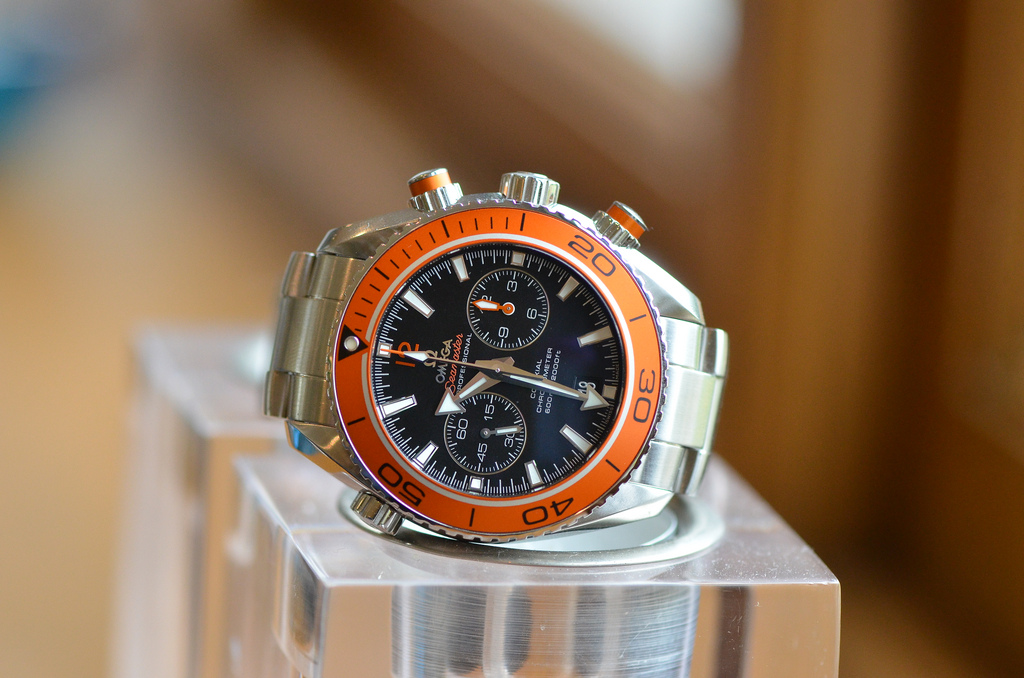
The statement that Omega merely uses standardized ETA movements is factually incorrect for two reasons:
- Omega does significantly improve and modify their ETA movements. Omega fits every watch movement (except for Omega Speedmaster/The Moon Watch – which uses the classic Lemania movement) with the Omega Co-Axial escapement.
- Omega has decided a few years ago, that all their models and collections (excluding the classic Speedmaster Moon Watch) will use in-house co-axial movements. This means Omega seriously intends to compete with Rolex and move up the luxury hierarchy of Swiss watchmakers. Omega is an ascending Swiss luxury brand.
Omega Seamaster Professional employs the ETA 2892-A2 base movement with 27 jewels and with a frequency of 25,200 vibrations per hour (vph). However, Omega has heavily modified this movement into the Omega Co-Axial 2500 which is one of the most accurate and reliable automatic movements ever made.
A few years ago, Omega developed the famous in-house co-axial movement called Omega Co-Axial 8500. The Omega Co-Axial 9300 movement is a chronograph movement which is built on the 8500 base movement.
The 8500 and 9300 movements have several interesting technical features that might interest you:
- They use the co-axial movement.
- They are partially in-house made by Omega.
- Both the 8500 and the 9300 movements have a 60 hour power reserve! As a comparison, the famous Rolex Submariner has a 50 hour power reserve.
- The in-house co-axial movements have 39 jewels (8500 movement) and 54 jewels (9300 movement) respectively. As a comparison, Rolex Submariner has 31 jewels.
- Both of the in-house co-axial movements use silicon components inside the movements, which reduce friction, reduce the need for lubrication, and improve the durability and longevity of the movements and increase the time intervals between each servicing or maintencance. That’s why Omega can offer an unheard-of, unprecedented and unparalled 4 year warranty on the 8500 and 9300 movements!
Now let’s talk about luxury brand competition:
Omega is without a doubt, the main competitor of Rolex. The “Omega vs Rolex”, and the “Rolex vs Omega” comparison on the Internet and off the Internet, is probably the most saturated question among watch enthusiasts and watch connoisseurs!
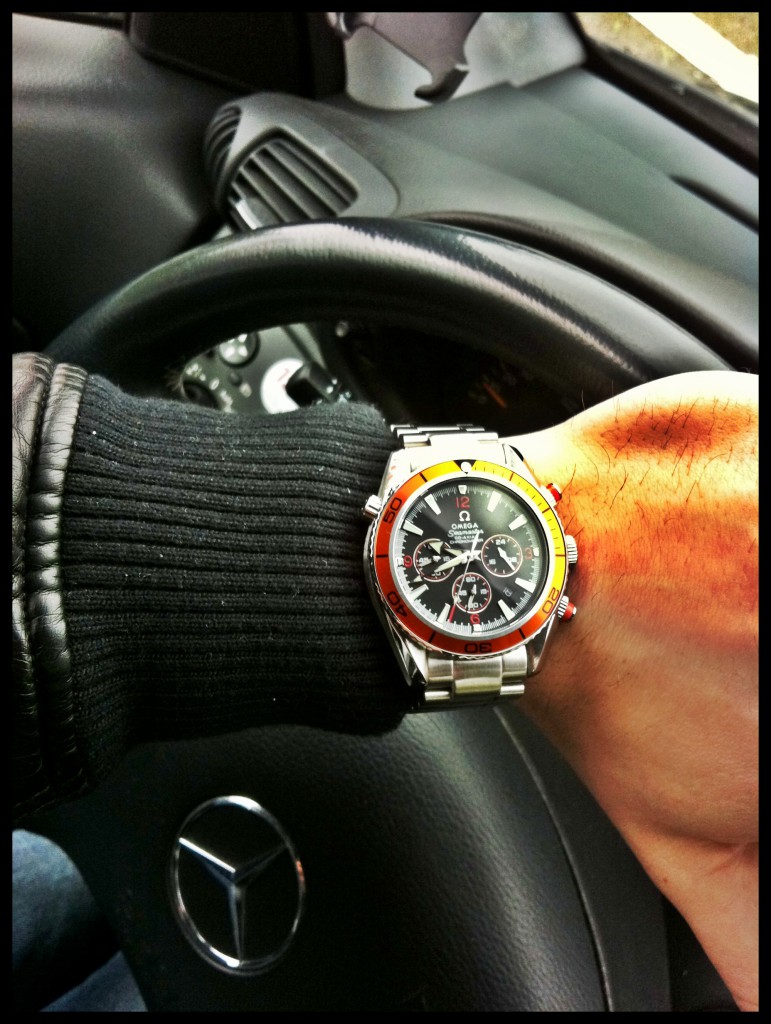
Omega is the main competitor of Rolex based on the following criteria:
- Annual production volume. In terms of x nr of watches produced, Rolex is 1st, and Omega is 2nd in Switzerland.
- Price range (although Rolex tends to be more expensive).
- Level of movement complications.
- Quality, technical excellence, accuracy, reliability and durability of their movements.
- Innovations and technical solutions.
- Pioneering spirit.
- Imposing history.
- Impact on watchmaking history.
- Omega and Rolex have been figting each other, as far as their marketing is concerned, for who has got the best divers watch since the late 1950s and early 1960s.
- Both brands are intimately associated with Ian Fleming’s James Bond 007. These two luxury brands have so far dominated among the watches utilised in the Bond Movies.
Rolex is still ahead of Omega, but Omega is doing its best to catch up with and outperform Rolex.
Rolex still has a slightly better steel grade, and better build quality than Omega. Rolex still has got a better resale value than Omega – and that has to with brand recognition and the simple truth of economics: supply and demand. We will see what happens in the future. Time will tell – the pun is absolutely intended.
Omega usually appeals to younger people (people in their 20s and 30s) while Rolex might appeal to slightly older people (people in their 30s and 40s). This however is a generalization and an oversimplification since you can find people that think and wear the exact opposite – despite their age bracket.
A few aspects of the Omega brand that might slightly disappoint some watch enthusiasts and connoisseurs:
Omega isn’t an independent watch manufacturer – it’s owned by Swatch Group.
On the other hand, most Swiss luxury watchmakers aren’t independent, so this isn’t unique in any way, shape or form, to Omega. Extreme luxury brands such as Jaeger LeCoultre, Vacheron Constantin, Panerai, IWC, Cartier, Zenith, Breguet and Blancpain aren’t independent either.
Omega rarely manufactures complication movements. Most Omega movements are in-house made but not all of them.
What celebrities are known to have endorsed Omega?
A few examples would be: former James Bond actor Pierce Brosnan, current James Bond actor Daniel Craig, Cindy Crawford, Nicole Kidman, and George Clooney. Buzz Aldrin, wore the Omega Speedmaster on the Moon in 1969. Former President John. F. Kennedy was apparently a great fan of the Omega brand.
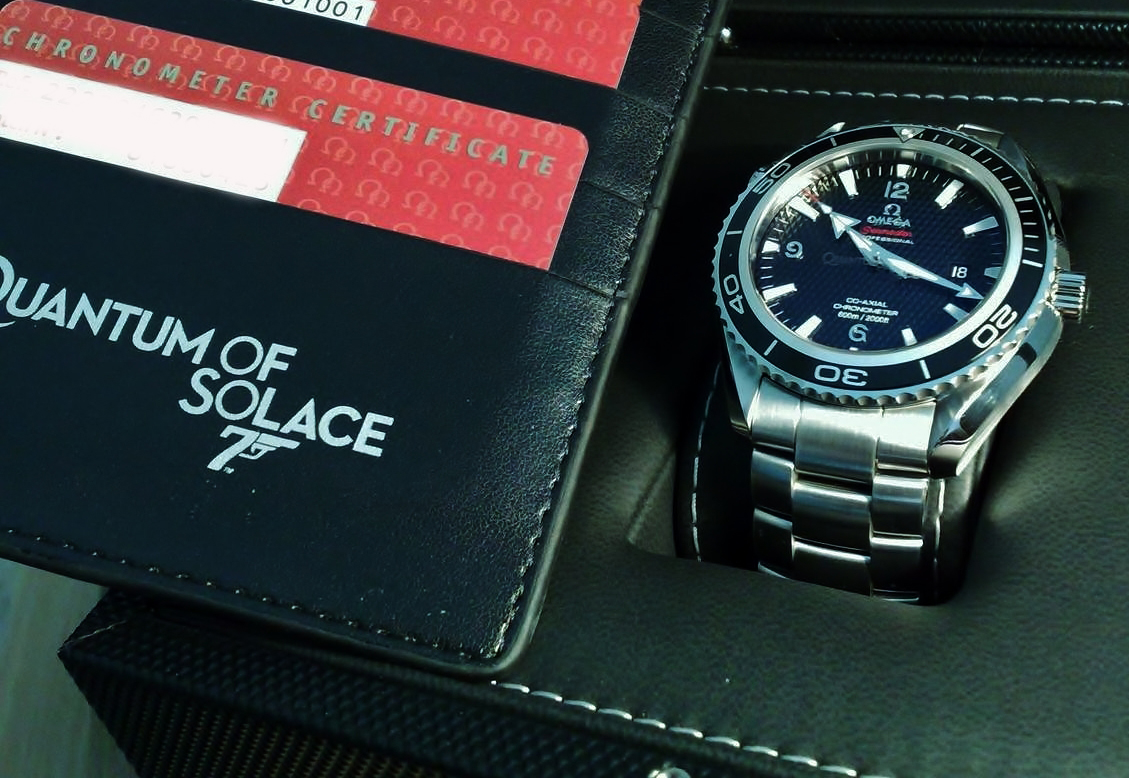
Now, regarding Omega’s divers watches: Omega offers 6 main Seamaster Collections»
- Omega Seamaster 300 Master Co-Axial. (water resistance 300 m, uses the 8400 co-axial in-house movement)
- Omega Seamaster Aqua Terra. (water resistance 150 m, uses the 8500 co-axial in-house movement)
- Omega Seamaster Bullhead. (water resistance 150m, uses the 3113 co-axial in-house movement)
- Omega Seamaster Diver 300m. (water resistance 300 m, still uses the old 2500 co-axial movement)
- Omega Seamaster Planet Ocean. (water resistance 600 m, uses the 8500/9300 co-axial in-house movements)
- Omega Seamaster Ploprof 1200m. (water resistance 1,200 m, uses the 8500 co-axial in-house movement)
Seamaster 300 Master Co-Axial, Aqua Terra, Planet Ocean and Professional 300
Seamaster 300 Master Co-Axial, Aqua Terra, Planet Ocean and Professional 1) are suitable for daily wear – they are robust, practical, durable and elegant everyday luxury watches and 2) have been used by James Bond. Daniel Craig has used all three while Pierce Brosnan has only used the Seamaster Professional.
Omega Seamaster Bullhead
Omega Seamaster Bullhead is a divers watch with a highly unorthodox design and aesthetics – a remake of the vintage Omega Seamaster Bullhead which was released in 1969. It’s called “Bullhead” due to the shape of the watch’s case. You have the crown and the pushers on the top, and the mechanism for rotating the inner bezel, on the bottom of the case.
Omega Seamaster Ploprof
Ploprof is a real divers watch and a tool watch. This is an extreme divers watch -it’s not suitable for everyday usage. If you are a serious diver or if you have an irresistible urge to go diving to a depth of 1,200 meters – that’s the watch of your choice! But seriously, this isn’t a versatile everyday watch, definitely not an elegant, dressy watch. You should go for this watch either if you’re a serious diver or if you are simply attracted to big and bulky tool watches.
Based on all these technical and functional features, I’ll give you the following recommendations:
The Modern “Vintage” Omega Seamaster 300: Omega Seamaster 300 Master Co-Axial
This is an “old-new” collection in the sense that this is a new collection equipped with the new co-axial movement technology, and yet the timepiece’s deliberate “vintage design”, is strikingly similar to Omega’s original and very first modern divers watch – the Omega Seamaster, which was released in the 1950s, in order to compete with Rolex’s flagship – the Rolex Submariner.
The Omega Seamaster 300 Master Co-Axial uses the latest movement technology, just like Omega Aqua Terra and Omega Planet Ocean. The Omega Seamaster 300 Master Co-Axial is a very versatile and elegant divers watch, which is both suitable for diving and for formal attire and suits. The Omega Seamaster 300 Master Co-Axial was used by Bond actor Daniel Craig in the 24th and latest Bond movie Spectre (2015).
The Elegant And Dressy Watch: Omega Seamaster Aqua Terra
If you want an elegant and dressy Omega watch which is water resistant, and if you have no particular need or interest in divers watch features, this is the watch you should opt for.
The Unorthodox Divers Watch: Omega Seamaster Bullhead
If you want an Omega divers watch with a deliberate retro vintage style that looks like nothing you’ve ever seen amongst most other brands, the Omega Seamaster Bullhead is the perfect choice for you.
The Classic James Bond Watch: Omega Seamaster Diver 300m/Omega Seamaster Professional 300m
The pre-ceramic Omega Seamaster Diver 300m (those with metal bezels) have absolutely been used by Bond since 1995. The ceramic ones (those with ceramic bezels) haven’t been used at all in the Bond films. Omega currently manufactures Omega Seamaster Diver 300m with the ceramic bezel. This is the closest you can get today, to the classic Omega James Bond watch. I still think you can manage to find and purchase the classic pre-ceramic Omega Seamaster Diver 300m James Bond watches online.
Omega’s Flagship Divers Watch: Omega Seamaster Planet Ocean
If you want the flagship among Omega’s daily, practical, all-round, robust, elegant divers watches, you should go with Planet Ocean. There are three reasons for that: 1) Planet Ocean uses the 8500 movement, 2) it’s water resistant down to 600 meters. 3) If it matters to you, this also happens to be one of the current James Bond watches. Personally, I just like the watch, the feel and the design – with or without being used in the Bond Movies.
The Tool Watch: Omega Seamaster Ploprof. If you want an extreme divers watch, that’s the watch you are looking for.
Top Page/Shopping/Brand Review Menu
A Review of Omega’s ranking
My ranking of Omega: 9th.
It’s debatable how you actually rank a brand, and a ranking is never objective, but the best way to turn a subjective ranking into an “objective” one is to rely on certain criteria. My ranking criteria of course are entirely subjective, and they aren’t set in stone.
I use 14 criteria in determining the ranking of a particular brand, such as (1) a long and respected history, (2) limited supply and large demand, (3) reputation/status/prestige, (4) whether the brand is independent or not, (5) pioneering spirit and innovations, (6) impact on watchmaking history and modern culture, (7) general in-house production, (8) whether the brand relies on in-house made movements or not, (9) whether or not the brand makes movement complications, (10) steel grade, (11) build quality, (12) price range, (13) good resale value, and (14) market presence.
Top Page/Shopping/Brand Review Menu
Shop Omega Watches
Prices for Omega Watches
- Omega Seamaster 300 Master Co-Axial can be found in the $4,000-$11,000 price range.
- Omega Seamaster Aqua Terra can be found in $2,000-$12,000 price range. Most of them can be found in the $2,000-$5,000 price range.
- Omega Seamaster Bullhead can be found in $5,000-$10,000 price range.
- Omega Seamaster Diver 300m can be found in the $2,500-$4,500 price range.
- Omega Seamaster Planet Ocean can be found in the $4,000-$16,000 price range. Most of them can be found in the $4,000-$7,000 price range.
- Omega Seamaster Ploprof 1200m can be found in the $7,000-$9,000 price range.
Omega Official Website
* Omega Aqua Terra watches should be classified as water resistant sports/dress watches. Technically speaking, Omega’s Aqua Terra watches are not divers watches, because they aren’t equipped with a traditional diver’s bezel (timer). Despite that, the Aqua Terra watches still fulfill the minimum water resistance requirement for divers watches, which is 330 feet/100 meters. Aqua Terra’s water resistance level = 492 ft/150 m. They are suitable for swimming and snorkeling, but not diving.
If you have any comments or questions please drop them below and I’ll be happy to answer them!
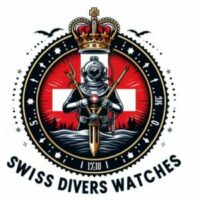
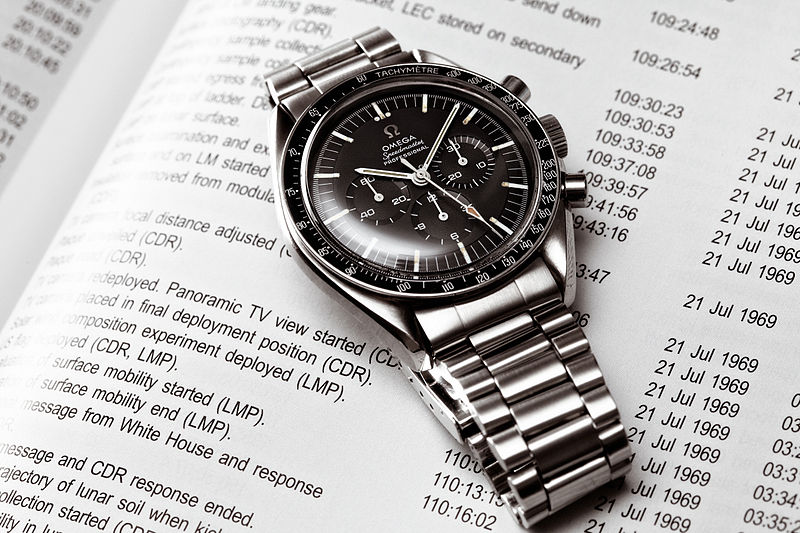
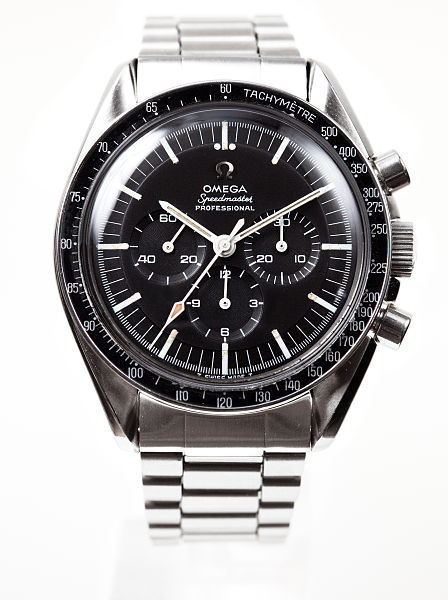
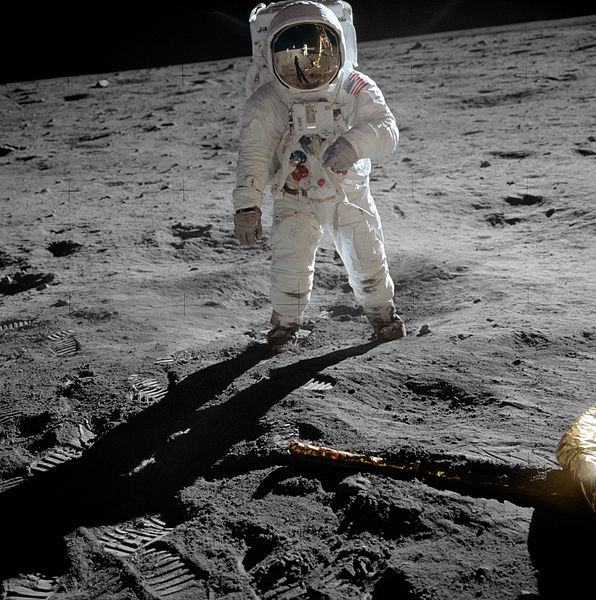
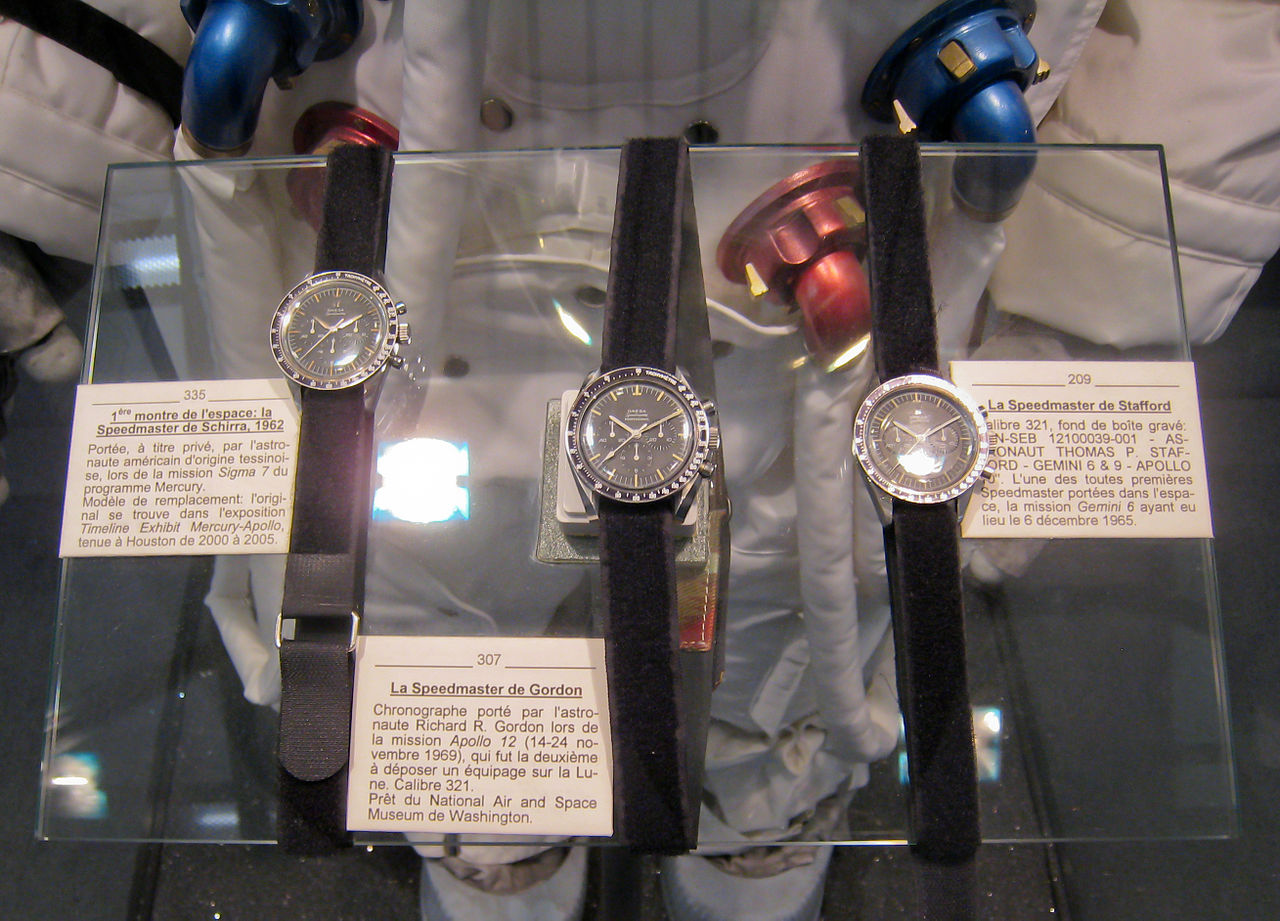
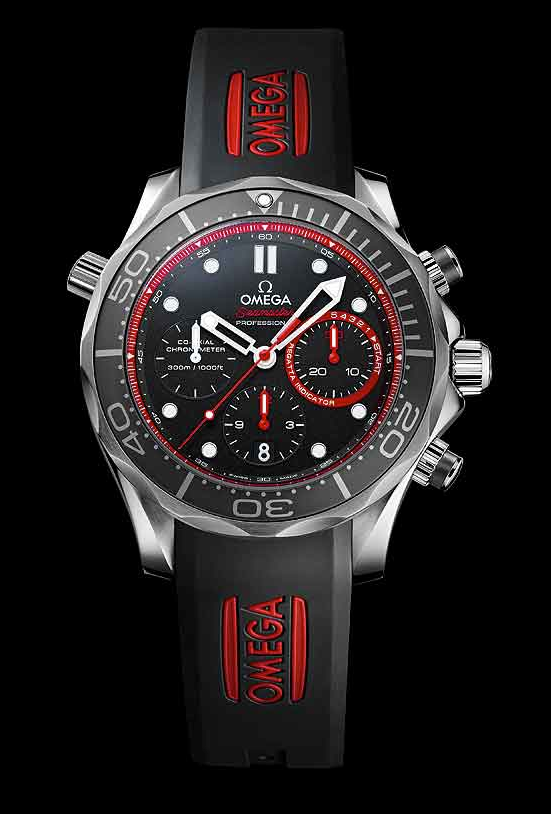
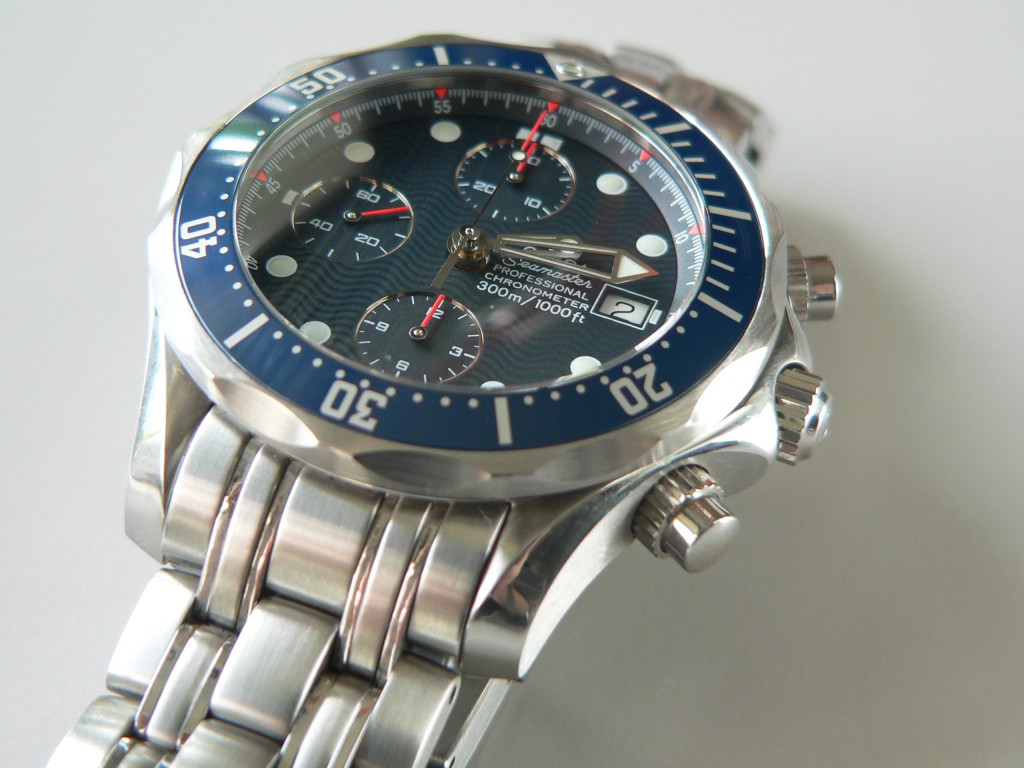
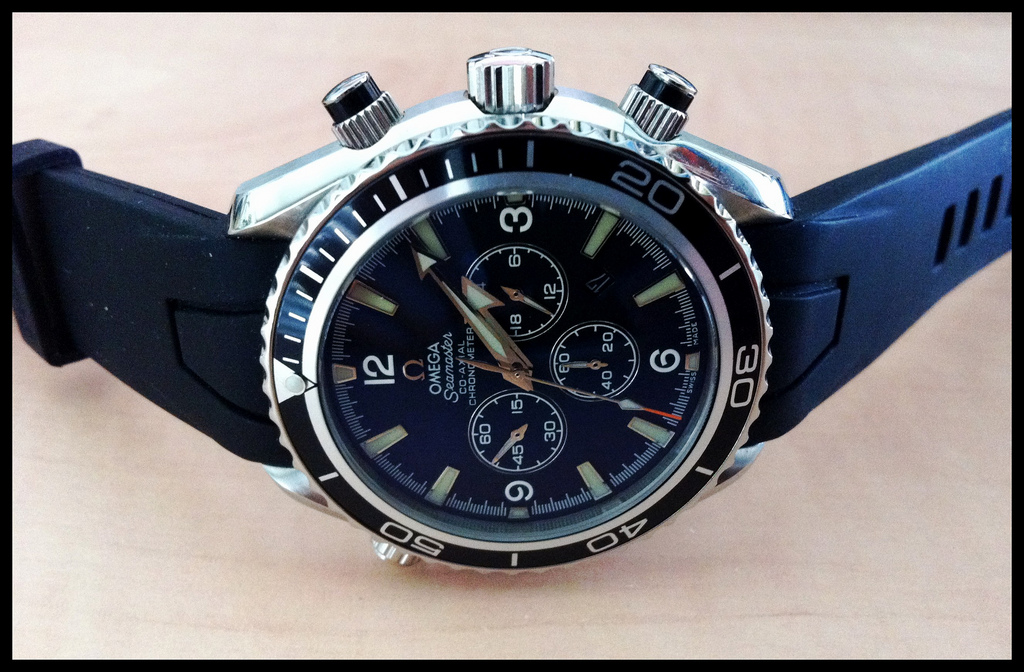
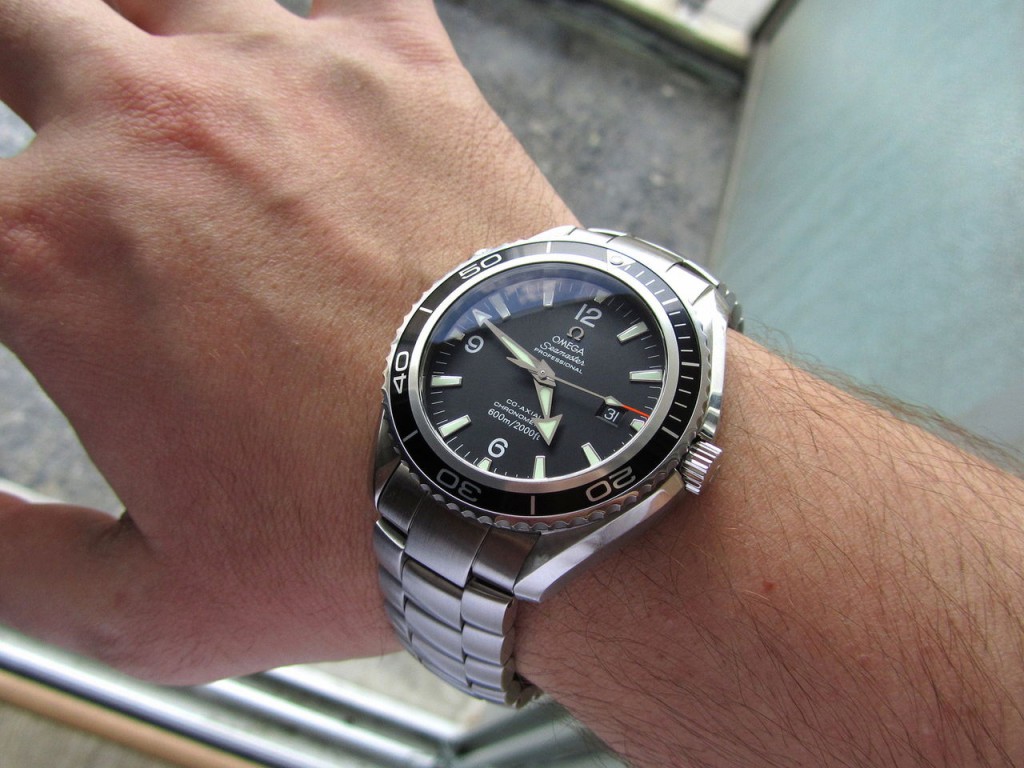
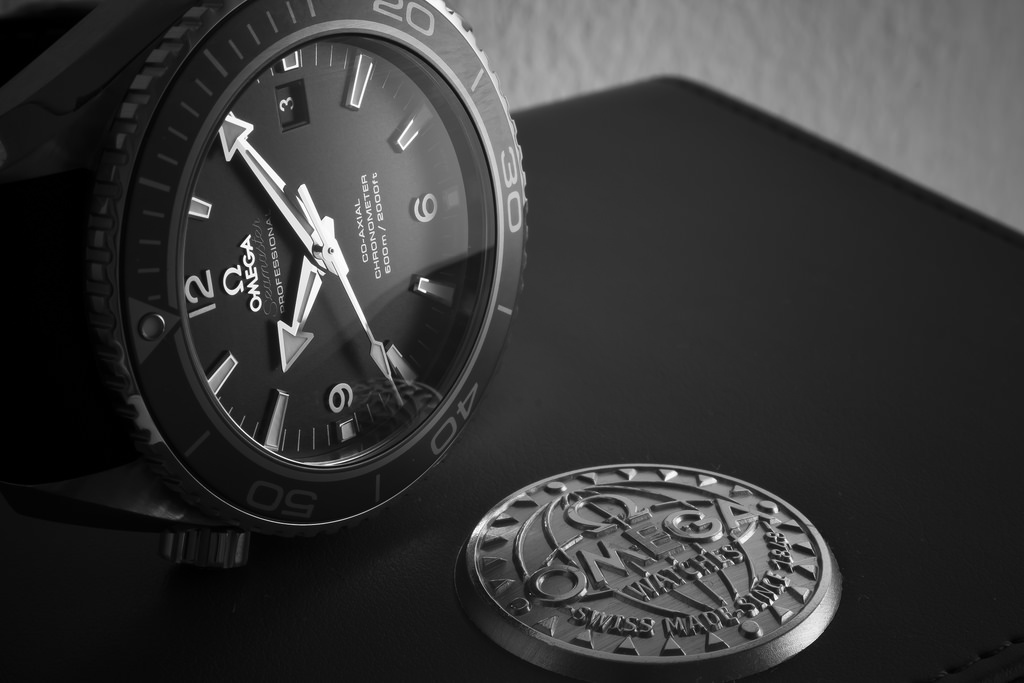
Hey Alex
Was the Omega Speedmaster Professional developed specifically for the moon landing in 1969?
Hey Mario!
No, the Omega Speedmaster was actually developed as early as in 1957, and was meant as a racing watch to be worn by racing drivers. The Omega Speedmaster’s original intended purpose wasn’t for space travel at all.
The Omega Speedmaster Professional earned the epithet “Moonwatch” 12 years later, in 1969, when NASA landed on the moon.
Cheers!
Alexander
Hi Alex!
Excellent blog. I really enjoy reading it. And great review on Omega, by the way.
What is, in your opinion, the most iconic Omega watch of all time, the most popular Omega, the most aesthetically pleasing Omega, and your personal favourite timepiece that this brand has to offer?
Kind regards
Andrew
Hi Andrew and a very warm welcome to swissdiverswatches.com!
And thank you for your very kind comments! I appreciate it.
The most iconic Omega watch of all time? That has to be (by default) the Omega Speedmaster Professional Moonwatch, which is literally the only timepiece ever produced by mankind to be worn by NASA astronauts on the moon. It’s the Omega Speedmaster Professional Moonwatch that solidifies Omega’s brand identity and anchors it to its history and heritage. The Speedmaster provides Omega with historical continuity.
The most popular Omega timepiece, at least in popular culture, has to be the Omega Seamaster Professional 300M, which was worn by two Bond actors: Pierce Brosnan and Daniel Craig.
The most aesthetically pleasing Omega timepiece? That’s highly subjective, but I love both the Seamaster Professional 300M and the Speedmaster Professional Moonwatch.
My personal favorite Omega watch? I can’t really limit myself to one, so I’d pick two: the Seamaster Professional 300M and the Speedmaster Professional Moonwatch.
Cheers!
Alexander